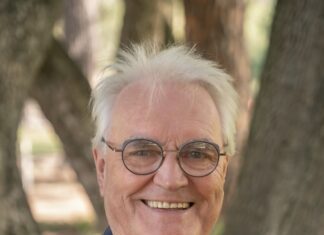Navule Pavan Kumar Rao is the author of Getting Started with V Programming, we got the chance to sit down with him and find out more about his experience of writing with Packt.
Q: What are your specialist tech area(s)?
Pavan: .NET, C#, Python, Go, V lang, and Azure.
Q: How did you become an author for Packt? Tell us about your journey. What was your motivation for writing this book?
Pavan: My motivation for writing this book: As a constant learner, I began exploring the V programming language in its early stages back in 2019. Having been impressed by the vast features that V has got, and it has also got some powerful concurrent programming features, I thought of letting the world know about V starting from its basics. So, I made the first video on V and published it on my YouTube channel TutLinks. I also shared the video with the V language creator, Alexander Medvednikov, and expressed my appreciation for making such a promising programming language.
“How did I become an author for Packt?” On a fine day (in fact during the night ) a message popped up in my LinkedIn account from Jassim Khan, to check my interest in writing a book on the V language. It was a tough decision for me to accept the proposal due to the fact that it was my first time ever writing a book. But after having calls with a couple of Packt employees made me feel warm and welcoming! I decided to go ahead with the proposal and I never looked back.
Q: What kind of research did you do, and how long did you spend researching before beginning the book?
Pavan: When I was approached by Packt, with the existing knowledge of V and its features for almost 2 years, I went ahead and gave an outline for seven odd chapters. But I felt that due to the lack of various programming approaches to writing applications in the V language as it is very new, having a to-the-point explanation of features doesn’t help for both the new and experienced software programmers. I decided to explore a lot, and I had written the topics in V in a clear and concise manner. The book “Getting Started with V Programming” now has at least fourteen chapters such that these features can be digested by both budding and seasoned software professionals.
Q: Did you face any challenges during the writing process? How did you overcome them?
Pavan: The V programming language is relatively new. For any such new programming language or framework, you can hardly find resources on the web in its early stages. I spent each and every weekend writing this book and also kept exploring various programming concepts in V. It was a tough decision to come up with multiple code examples and find the best possible example that will reach the mind of all levels of readers of this book.
Q: What’s your take on the technologies discussed in the book? Where do you see these technologies heading in the future?
Pavan: As this book is completely on V programming language, I envision V has a great feature. In contrast to Go programming language, V is fast and is easy to learn. Syntactically, V is much simpler than Go. If you know Go, it’s very easy for you to learn V. Also, V has fast compilation, and it has got tremendous performance as fast as C. V also has a minimal amount of memory allocations and its auto-free engine offers innovative memory management capabilities. There are many other features V has got which will help you to write enterprise-grade scalable applications using the V programming language. Despite the fact that V is still in its early stages, it has gained a lot of interests among software engineers which is evident from the huge number of stars (~25.3k) on its official GitHub repository https://github.com/vlang/v
Q: Why should readers choose this book over others already on the market? How would you differentiate your book from its competition?
Pavan: I think this is the first-ever book on the V programming language which I’ve authored with Packt.
Q. What are the key takeaways you want readers to come away from the book with?
Pavan: The readers of this book will have a thorough understanding of how to write software applications using the V language. Precisely, readers will have a concrete understanding of various V programming topics such as primitive data types, arrays, maps, structs, and modules to mention a few. I am sure the readers will enjoy the chapters related to concurrency and channels where I gave a detailed explanation of concepts along with example programs written in V.
Q. What advice would you give to readers learning tech? Do you have any top tips?
Pavan: Although we are acing in one technology, it is essential to keep ourselves focused and up to date with the latest tech and the most happening practices. Because technology keeps evolving!
Q. Do you have a blog that readers can follow?
Pavan: I occasionally blog here: https://www.tutlinks.com, and vlog here: https://www.youtube.com/c/TutLinks.
Q. Can you share any blogs, websites and forums to help readers gain a holistic view of the tech they are learning?
Pavan: For those who learn V, follow my channel, otherwise I would recommend purchasing the first-ever book on V authored by me. The V community is highly active and responsive on their official GitHub repository and Discord.
Q. How would you describe your author journey with Packt? Would you recommend Packt to aspiring authors?
Pavan: My journey with Packt is filled with constant learnings where I enhanced my writing skills. From day one, each and every employee from Packt I collaborated with made me feel comfortable and provided enough guidance and support. Every member of the team is multi-talented.
I would like to convey my sincere thanks to each of those in my team who is actively or passively involved in making this book take good shape enough to reach programming enthusiasts.
To the aspiring authors, I have only one thing to say. It is always better to give things that you never know of a try. Packt team is included with all the batteries that are enough to charge the aspiring authors and get them going!
Q. What are your favorite tech journals? How do you keep yourself up to date on tech?
Pavan: Not specific, but I mostly read about tech and tech news on websites like dev.to, techcrunch.com and hashnode.com. Also, there is a lot of interesting tech content being generated on YouTube for ages which most often trend in my feed.
Q. How did you organize, plan, and prioritize your work and write the book?
Pavan: Balancing my work as a full-time engineer and a book author for a programming language that is very new and promising in the market was indeed tough for me. However, I managed to draw a solid line between both my full-time work and authoring a book in a focused manner.
Q. What is the one writing tip that you found most crucial and would like to share with aspiring authors?
Pavan: Knowledge of concepts that you are authoring and the art of articulating the content to reach readers in a proper manner are two key skills that are most crucial.
You can find Pavan’s book on Amazon by following this link click.









